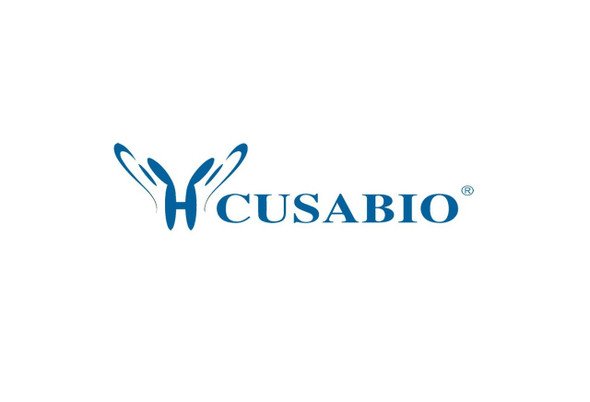Cusabio Other Organism Recombinants
Recombinant Hepatitis B virus genotype D subtype ayw Protein X (X) | CSB-YP865559HEO
- SKU:
- CSB-YP865559HEO
- Availability:
- 25 - 35 Working Days
Description
Recombinant Hepatitis B virus genotype D subtype ayw Protein X (X) | CSB-YP865559HEO | Cusabio
Alternative Name(s): HBx (Peptide X) (pX)
Gene Names: X
Research Areas: Signal Transduction
Organism: Hepatitis B virus genotype D subtype ayw (isolate Japan/JYW796/1988) (HBV-D)
AA Sequence: MAARLCCQLDPARDVLCLRPVGAESRGRPVSGPLGSLSSSSPSAVPTDHGAHLSLRGLPVCAFSSAGPCALRFTSARRMETTVNAHQILPKILHKRTLGLSTMSTTDLEAYFKDCLFKDWEELGEEIRLKVFVLGGCRHKLVCAPAPCNFFTSA
Source: Yeast
Tag Info: N-terminal 6xHis-tagged
Expression Region: 1-154aa
Sequence Info: Full Length
MW: 18.1
Purity: Greater than 85% as determined by SDS-PAGE.
Relevance: Multifunctional protein that plays a role in silencing host antiviral defenses and promoting viral transcription. Does not seem to be essential for HBV infection. May be directly involved in development of cirrhosis and liver cancer (hepatocellular carcinoma). Most of cytosolic activities involve modulation of cytosolic calcium. The effect on apoptosis is controversial depending on the cell types in which the studies have been conducted. May induce apoptosis by localizing in mitochondria and causing loss of mitochondrial membrane potential. May also modulate apoptosis by binding host CFLAR, a key regulator of the death-inducing signaling complex. Promotes viral transcription by using the host E3 ubiquitin ligase DDB1 to target the SMC5-SMC6 complex to proteasomal degradation. This host complex would otherwise bind to viral episomal DNA, and prevents its transcription. Moderately stimulates transcription of many different viral and cellular transcription elements. Promoters and enhancers stimulated by HBx contain DNA binding sites for NF-kappa-B, AP-1, AP-2, c-EBP, ATF/CREB, or the calcium-activated factor NF-AT.
Reference: "Molecular functions and biological roles of hepatitis B virus x protein." Tang H., Oishi N., Kaneko S., Murakami S. Cancer Sci. 97:977-983(2006)
Storage: The shelf life is related to many factors, storage state, buffer ingredients, storage temperature and the stability of the protein itself. Generally, the shelf life of liquid form is 6 months at -20?/-80?. The shelf life of lyophilized form is 12 months at -20?/-80?.
Notes: Repeated freezing and thawing is not recommended. Store working aliquots at 4? for up to one week.
Function:
Involvement in disease:
Subcellular Location:
Protein Families:
Tissue Specificity:
Paythway:
Form: Liquid or Lyophilized powder
Buffer: If the delivery form is liquid, the default storage buffer is Tris/PBS-based buffer, 5%-50% glycerol. If the delivery form is lyophilized powder, the buffer before lyophilization is Tris/PBS-based buffer, 6% Trehalose, pH 8.0.
Reconstitution: We recommend that this vial be briefly centrifuged prior to opening to bring the contents to the bottom. Please reconstitute protein in deionized sterile water to a concentration of 0.1-1.0 mg/mL.We recommend to add 5-50% of glycerol (final concentration) and aliquot for long-term storage at -20?/-80?. Our default final concentration of glycerol is 50%. Customers could use it as reference.
Uniprot ID: Q9QMI3
HGNC Database Link: N/A
UniGene Database Link: N/A
KEGG Database Link: N/A
STRING Database Link: N/A
OMIM Database Link: N/A









